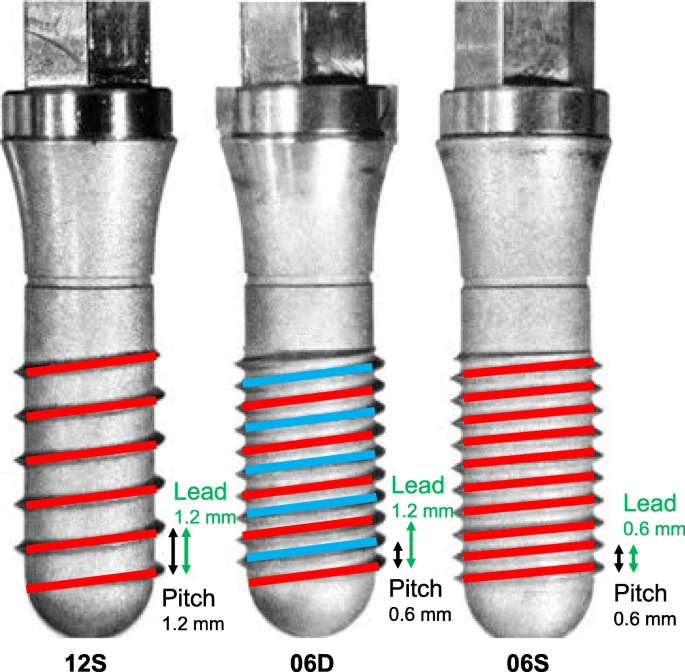We show here that increasing thread length and reducing pitch can increase primary implant stability without changing the size of an implant.
Figure 1. Implant code 12S
author: Yoko Yamaguchi,Makoto Shiota,Masaki Fujii,Masahiro Shimogishi, Motohiro Munakata | publisher: drg. Andreas Tjandra, Sp. Perio, FISID
Figure 1. Implants. Implant code 12S is similar to a commercially available standard single-threaded implant with equal thread pitch and a 1.2-mm lead. The thread length of implant code 06D is doubled by adding the second thread (light blue). The thread length of implant code 06S is doubled by a 50% reduction in pitch and lead angles. Characteristics of each implant are summarized in Table 1

Serial posts:
- Effects of implant thread design on primary stability
- Introduction : Effects of implant thread design on primary stability
- Methods : Effects of implant thread design on primary stability
- Results : Effects of implant thread design on primary stability
- Discussion : Effects of implant thread design on primary stability (1)
- Discussion : Effects of implant thread design on primary stability (2)
- Discussion : Effects of implant thread design on primary stability (3)
- Discussion : Effects of implant thread design on primary stability (4)
- Discussion : Effects of implant thread design on primary stability (5)
- References : Effects of implant thread design on primary stability
- Figure 1. Implant code 12S
- Figure 2. Insertion torque (IT), removal torque (RT), and implant stability quotient (ISQ)
- Figure 3. Comparison between IT and RT
- Figure 4. Torque kinetics. Immediately after insertion terminated, the implant was removed using the same load and rotation speed. Torque kinetics were measured during implant insertion (top) and removal (bottom)
- Figure 5. Microscopic analysis of contact interfaces
- Figure 6. Bone debris at the contact interfaces
- Table 1 Dimensions of implants
- Table 2 Insertion torque (IT), removal torque (RT), and ISQ values